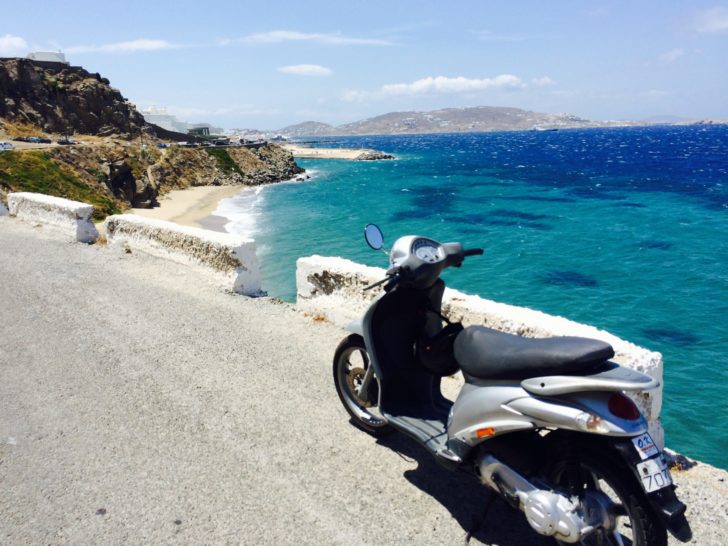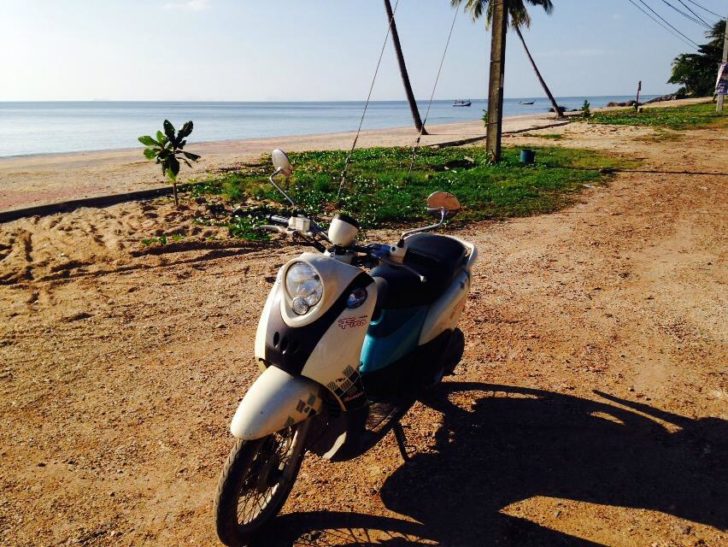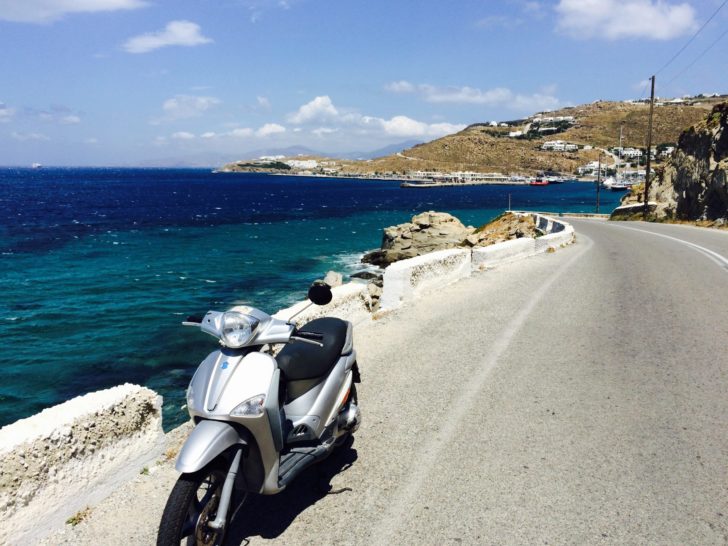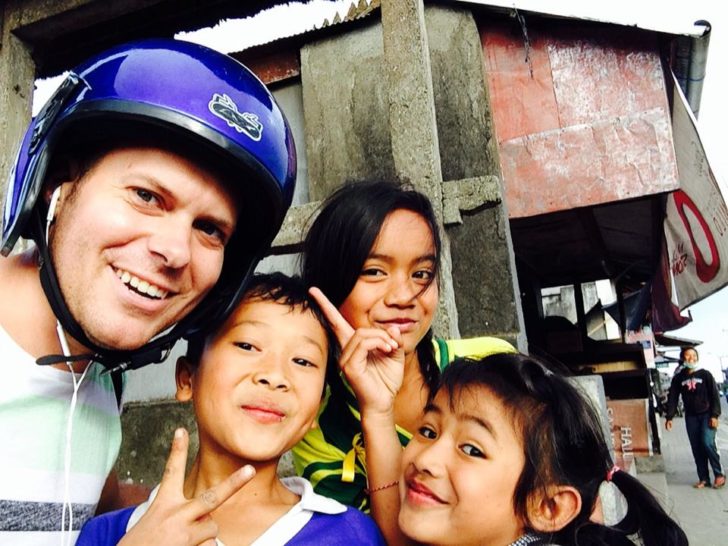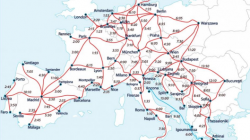If you plan on spending any time on European islands this summer, particularly if they cater to tourists, you’ll notice a number of people riding scooters and ATVs to get around, most people go on https://www.listedbuy.com/motorcycles/trike and find a motorcycle to use the entire summer and then they just sell it again. They can be quite fun, and a much more economical way to get to various beaches than renting a car or using the usually limited number of taxis on an island. In addition, if there are atv trails around, then you’re in for an atv ride of your life. You may either rent or buy atvs or utvs from a reputable utv dealer.
But are they for you? Scooters aren’t too dissimilar from a motorcycle or an electric bike, and plenty of people each year get scraped up by not knowing how to ride them, or what to look for when they rent. The tips here will help you in Europe, Asia, or wherever else you plan to travel.
Previous articles in the series:
- Status (Kind of) Matters: Consider a Status Match before Going to Europe
- Visit Europe with One-Way Awards on Different Alliances
- Travel Within Europe by Train, Road, and Air
- Know the Partner Airlines when Searching for Award Travel to Europe
The Basics of Renting
First, lets go over the basics of renting. The sophistication of rental companies varies widely from destination to destination. In Greek or Spanish Islands, expect to fill out a rental contract, not too dissimilar from a regular car. Daily rates are usually 20-30 Euro ($22-$33 USD) per day. Simply ask your lodging for a few scooter rental options or look online. They are usually listed like any other rental companies.
In other parts of the world, particularly Southeast Asia, rates are closer to $6 per day and the rentals are far more informal, just hand over the money and they’ll hand over the keys.
Be sure to inspect the tires and make sure they are fully inflated. You should also check the brakes and the ignition are in good working order. Next, check the turn indicators and night lights, since these are crucial to be seen after dark. Ideally all of the gauges are fully functional, but those are the first to break. The easiest thing to do is draw a small diagram of a bike on a piece of paper and note any damage on the fenders or seats.
Refueling
Keeping the tank filled will be your primary concern. Most scooters have roughly a 1 gallon gas tank, which will get you about 60km of driving. Gas is almost always available either from gas stations, or more likely from roadside bodegas with 1L bottles – with prices being roughly $1-1.50 per liter. In Southeast Asia, these spots are sprinkled all throughout the vicinity and may be private homes, fruit stands and snack shops. Just look for bottles with yellow liquid and signal 1, 2, 3 liters and the attendant will take care of the rest. The tank is almost always under the seat, which you open by inserting and turning the key in a slot in the back. If you’re looking for MOT test services to makes sure your motorcycle is roadworthy and safe to use, get in touch with Moto Hub now. And if you’re also looking to buy beautiful motorcycles, then you may want to see this harley-davidson rocker c for sale here for more info!
Be sure to never let the gas gauge go below 1/4. I’ve ridden bikes around Bali on fumes and sometimes you need an extra 10km just to get to the next stop, kind of nerve wracking. I’ve also had starter issues in Mykonos if the tank gets too low.
Starting Up
Starting a bike is a little counterintuitive. Typically, you start it on the kickstand, though be sure to flip that up before you begin moving. You have to squeeze the left brake while rotating the accelerator on the right while pushing the start button — yes all three. Then you have to disengage the brake and accelerate at the same time. Bikes are actually considerably less stable at very slow speeds and the throttle can be a little tricky to get the hang of. Stick to wide, flat, low-traffic roads and starting the bike several times before you tackle anything more complicated.
Road Quality, Driving Etiquette, and “Lanes”
Bikes are also a LOT more sensitive to road quality than most cars and the etiquette is a little different. First, you have to be VERY careful about potholes – they are considerably more dangerous to bikes and can causes crashes much more easily than in a car. Stay away from them. Similarly, dirt roads can cause swerving and instability, potentially causing the bike to slide over. Be very careful of those, as well as washed out patches and approach with extreme caution.
Typically roads in Europe are in pretty good shape, as are those in Thailand, but be careful if you’re on a particularly remote island or very far from major infrastructure or cities. I found Indonesia to be by far the most challenging out of Thailand, Vietnam, the US and Greece.
Etiquette also varies massively by country and whether you’re on a touristy island or near a city. On a small island, many motorists are also tourists and drive more similarly to home, passing you with a lot of room and only when it’s safe.
Closer to cities, expect your bike to be much slower than most traffic and expect that the size of your stream of traffic in your direction expands and contracts with volume, making the midpoint on the road anywhere from 3/4 one way to 3/4 the other depending on the quantity of traffic, with anywhere from one to several vehicles side-by-side.
This can be very unnerving for Western drivers, but can be highly efficient when bikes are the primary vehicle and have to share the road with slower trucks. Several bikes can fit in the space side by side, so this bunching up avoids crushing traffic jams.
Moreover, using your horn is much more common in Southeast Asia and is essentially used to signal “I’m here!” to vehicles ahead and behind you. It’s not aggressive and you should use your horn liberally, since nearly everything else is bigger.
As a bike, you should always keep to the edge unless passing. Most motorists will simply go around you, but you don’t want to create a massive line behind you by hogging the road.
Curves — Look Where You Want to Go
Probably the hardest part of driving a scooter for the first time is getting a hang of the turns. The easiest thing to remember is to “look at where you want to go” and your body will point the bike at the appropriate angle. If you try to “turn” the bike, it will get awkward and you won’t be able to make as tight of a corner as you want. “Looking” into the turn will cause you to lean the right way.
Second Passenger — Not Great for Hills
The other main thing to remember is that a bike can generally handle most hills for one person, but may have trouble with two — particularly if it’s 50cc. In those cases, politely ask your passengers to get off and walk. Bikes become far less stable to drive with two people.
In most cases, for beginners, I would strongly recommend one person per bike. It is far easier to control your bike and stay stable with one person on it. An extra few dollars per day is not worth a trip to the clinic.
Security — Locking Helmets to the Bike
Lastly, just be smart about parking your scooter. In most regions that rent them, they are so common than nobody is likely to walk off with them, but two things can help make it that much more difficult.
First, when parking, turn the steering column all the way to the left before you turn off the scooter. This will lock it into place.
Second, to not have to lug your helmet around (AND YOU SHOULD ALWAYS GET A HELMET WITH YOUR RENTAL), open the hatch under the seat, place part of the helmet strap across the interior, so that it will stay in place when you close the hatch. This makes it hard to snatch your helmet without unlocking the hatch.
Bring a Map, or Cache One
When navigating around, you will want to carry a paper map, and possibly get data on your phone with a local SIM card. Many roads on remote islands aren’t marked or signed and you want to be absolutely sure the road you’re on will take you where you want to go rather than dead end in a farm. Especially when you have to be mindful of fuel.
Lastly, Have Fun!
Finally, scooters are a lot of fun! They will allow you to see so much more of small island paradises and give you the flexibility to get around on your terms. I’ve taken some absolutely beautiful photos and visited small outposts that aren’t on any maps. Take some of the precautions above and you’ll have a memorable part of any trip.

